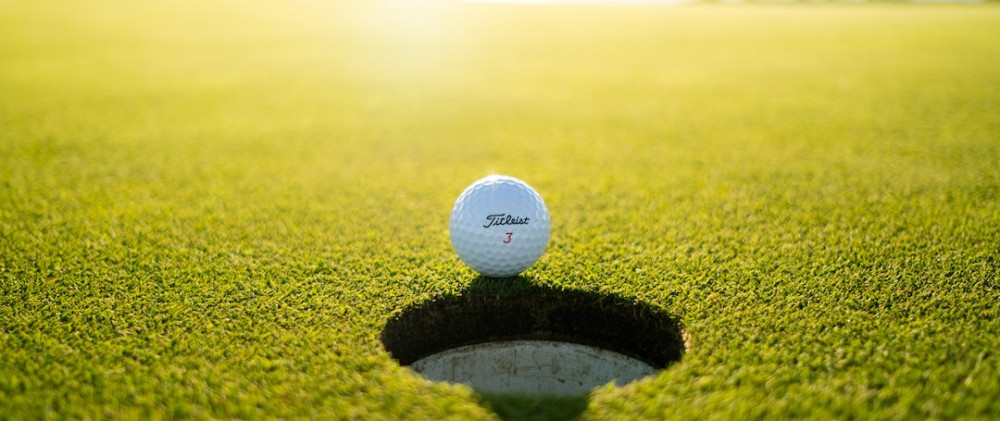
Golf ball technology has come a long way throughout the history of the game. From the early materials including wood, leather, feathers, tree sap, and rubber. Oh yeah, and Let’s not forget the stone, to space-age materials including synthetic polymers and urethane, The ball has undergone a dramatic transformation throughout the centuries.
The 20th century saw the rise of multi-layer golf balls. The first examples had liquid or solid cores surrounded by rubbery strings, I remember these when I was a boy. Softer, rubber covers, as well as the urethane cover introduced in the early 2000s, which allowed manufacturers to achieve great advancements in feel, distance and spin. This was a real turning point for the game, then later advancements in ball design would begin to affect club design, e.g. club head grooves, as well as the design of the courses, such as increasing the golf course length.
So exactly what is “The Future of Golf Balls”?
The Present
Just like in the past, the golf ball is constantly evolving through innovation. Golf ball manufacturers are always developing new materials and core technologies, as well as new dimple designs to try to improve golf ball performance. Have you ever wondered what is the purpose of the dimples in the golf ball. In my mind I always thought it was for the purpose of giving the ball more spin. However, I have recently learned that I was definitely wrong in my thinking. I learned that the dimples create a thin layer of air around the ball which helps to reduce drag around the ball and increase the golf balls lift. This also helps with distance and accuracy. Also instead of helping to create more spin, like I was thinking, the dimples actually create a turbulence in the air which helps to reduce the spin of the ball, making it easier to control. And lastly, the dimple design also supposedly helps to reduce the amount of glare that is reflected off of the ball so you can see it better in flight.
Today modern balls generally consist of several layers of synthetic materials, like urethane blends. They vary from two-piece to five-piece balls, and they offer a variety of distance versus feel characteristics and come in a variety of colors from white to pink to several fluorescent colors.
With such a huge variety of choices now available, today’s golfer has more options than ever before to find a golf ball that is precisely suited to their particular game. To the average golfer, like me, however, the surplus of alternatives may seem, and feel, vary confusing.
The role of Technology
As we all know, technology is constantly increasing. Technology has played a huge role in the past, and will continue in the future, to play a major role in the advancement of golf balls. And as this technology advances, manufacturers will be able to develop new materials and core technologies that will make golf balls more efficient and more effective. In addition to this, the use of 3D printing along with other advanced manufacturing techniques will help to reduce the cost of production and make golf balls more affordable for the average golfer. Ultimately, the use of data analytics and artificial intelligence will help to improve the performance of golf balls and make them more consistent in all conditions.
Excitement in the Future of Golf Balls
Usually when you think of excitement in golf, you think of a Driver that you can launch a golf ball 300 yards right down the middle of the fairway on a consistent basis. Or getting a hole in one on a par 3. Or the perfect chip shot from 30 yards out that lands right next to the pin. Excitement for me would just be to see a continuous improvement in my game.
However, there are some exciting things just around the corner for the future of golf balls, and ultimately the game of golf. One of the most exciting things for the future of golf balls is the potential for increased sustainability and cost efficiency. Golf Ball manufacturers are constantly looking for ways to reduce the environmental impact of golf and to make their products more affordable for the average golfer. Things such as new materials, core technologies, along with manufacturing techniques will help to make golf balls more sustainable and cost effective, while at the same time still delivering the performance enhancements the golfers expect. All this could have a major impact on the game of golf, making it more accessible to a wider audience and helping to preserve the environment.
Already you can purchase biodegradable golf balls that will completely dissolve within 2 weeks when exposed to water, or a wet environment for extended periods. These are friendly balls to use around large bodies of water where marine life is present.
Conclusion
In conclusion, The future of golf could not be any brighter. Golf: a sport that at one time was only played by the elite few. A sport that is continuing to grow in popularity every year. A sport that is constantly becoming more accessible, affordable, and enjoyable for all levels of players.
According to the National Golf Foundation in 2021, there was an estimated 24 million golfers in the United States. Approximately 16 million of these are considered average golfers, meaning they have a handicap of 18 or higher. Yep, I definitely fall into the average golfer category. This was an increase of 1 million golfers from the previous year, indicating that the game is continuing to grow in popularity.
Yes, the future of golf balls and the game of golf is looking vary good. Especially for us average golfers.
See you on the green,
Chris